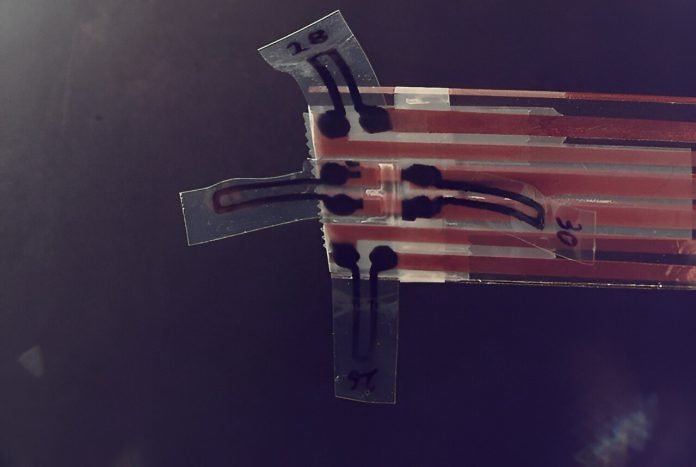
Researchers from Eindhoven University have created a new type of soft robotic hand made from liquid crystals and graphene.
This innovative design could be a game-changer for future surgical robots, making them safer and more effective.
The research has been published in the journal ACS Applied Materials & Interfaces.
In the future, soft robots might become common in hospitals, especially for surgeries. But before that can happen, scientists need to learn how to control and move these flexible robots accurately.
Current soft robots often contain metals, which aren’t ideal for use in the human body due to its watery environment.
Led by Ph.D. candidate Laura van Hazendonk, along with researchers Zafeiris Khalil, Michael Debije, and Heiner Friedrich, the team designed a soft robotic hand or gripper using graphene and liquid crystals. These materials are organic, meaning they can potentially be used safely in surgeries.
Robots are already a big part of our world. They help build cars and electronics, assist surgeons with precise operations, and even clean our homes. “Society depends on robots, and we’re always finding new ways to use them,” says Van Hazendonk. “But to create new uses, we need to consider different materials.”
Van Hazendonk is talking about using soft materials like fluids, gels, and elastic substances. Traditional robots are usually made from hard metals, which can be limiting. In some cases, these rigid robots can’t perform certain tasks effectively. That’s why the researchers are exploring soft materials that can change shape and still function like traditional robots.
Soft robots could make a big difference in surgeries. Many surgical procedures are complex and delicate, requiring precise movements that aren’t always possible with rigid robots. Soft robots, however, can navigate tight spaces more easily and provide better assistance during surgery.
For their project, the researchers chose to use liquid crystals and graphene. Liquid crystals can behave like both liquids and solids, depending on how they’re stimulated. This makes them ideal for creating soft robots. Graphene, a super-strong and conductive material, also plays a crucial role in the design.
Interestingly, both liquid crystals and graphene are connected to Nobel Prizes in Physics. Pierre-Gilles de Gennes won the prize in 1991 for his work on liquid crystals, and Andre Geim and Konstantin Novoselov won in 2010 for their work on graphene.
To create the soft robotic hand, the team designed actuators, which control the robot’s movements. Traditional actuators move when supplied with electricity, air, or fluid. However, the researchers used heat to drive their liquid-crystal network (LCN) actuators. They created a gripper with four fingers, each controlled by LCN actuators that respond to heat through graphene-based heating elements.
This new design shows great promise for the future of surgical robots. With continued research and development, soft robotic hands like this one could become a common tool in operating rooms, making surgeries safer and more effective.



